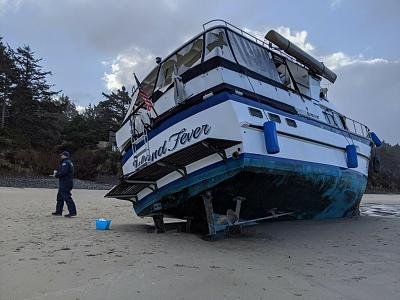When the sailboat heaves-to, the sail is backwinded and is balanced with the keel. The sailboat does not roll as a result. It simply rises and falls gently with the waves.
More specifically the HEAD sail is back winded, the MAIN sail is in tight on the correct side. The rudder is full to windward. The main with the help of the rudder wants to luff the boat, the headsail is stopping that. The keel works to slow the drift.
Those of you that ever learned to sail will remember not being able to come about due to lack of speed and/or improper timing of bringing the headsail across and may remember the term "being in irons". (The solution was to back wind the head sail, fall off, bring the headsail back to the leeward side, build speed, head up and try again.)
Hove-to is setting the boat up to be in irons and staying in irons.
The effect is very considerable. I used it several times not because the weather was exceeding our ability, but just to stop the motion and progress and tend to a situation.... like a puking child or the fridge door opening and the eggs flying through the cabin.....

Like I said the calming is considerable
Used to call it the "freeze button".
I can't comment on how effective the drifting of a power boat with bow just off the wave direction is, as I have never tried it yet. Intuitively I'm gonna say it would bring considerable relief compared to beam and aft seas or pounding into a sea. With enough sea room it could be a very useful technique if waiting in place, more or less, is desired, or temporary relative calm is needed to tend to other matters.



